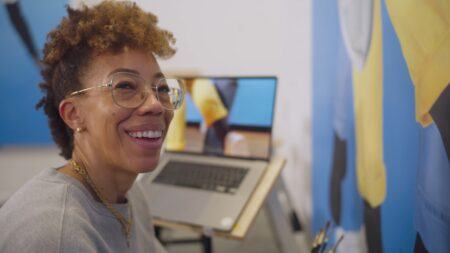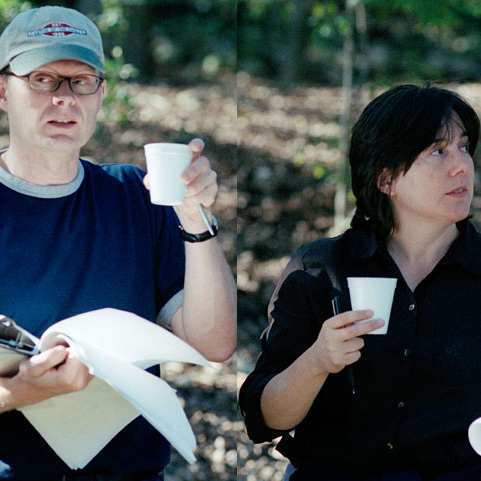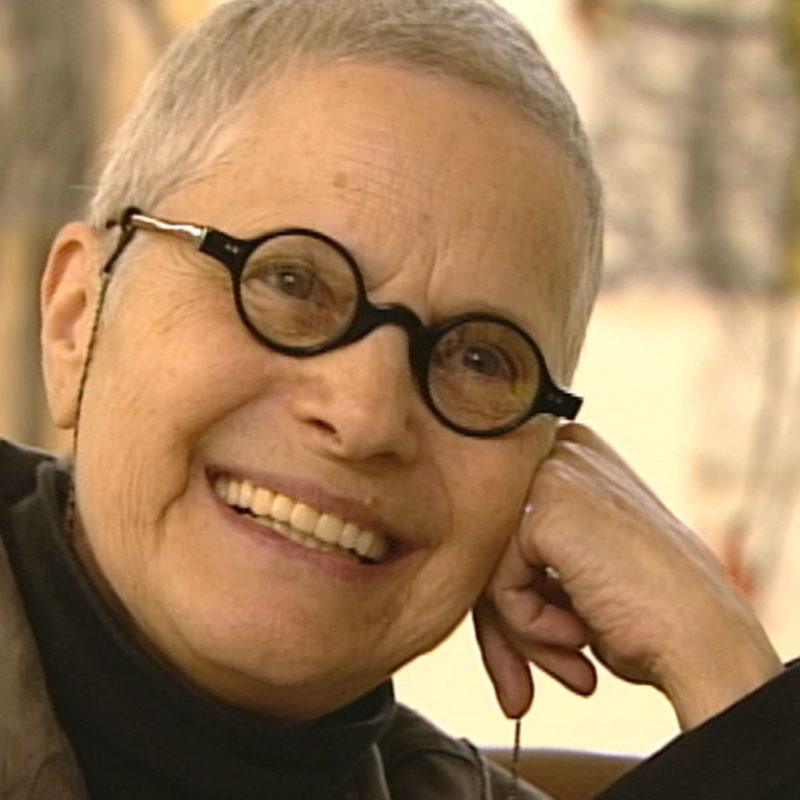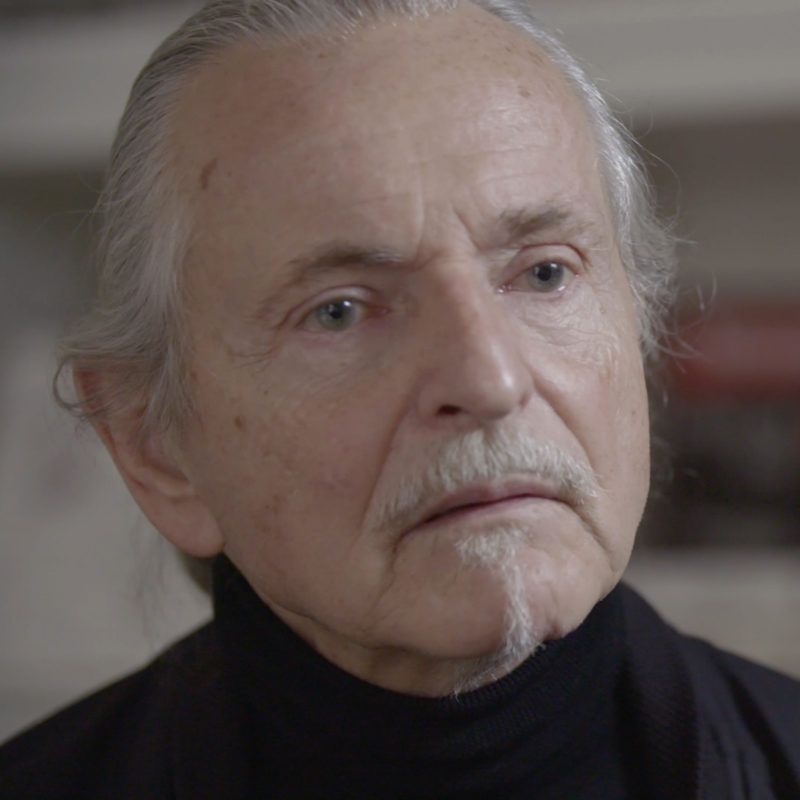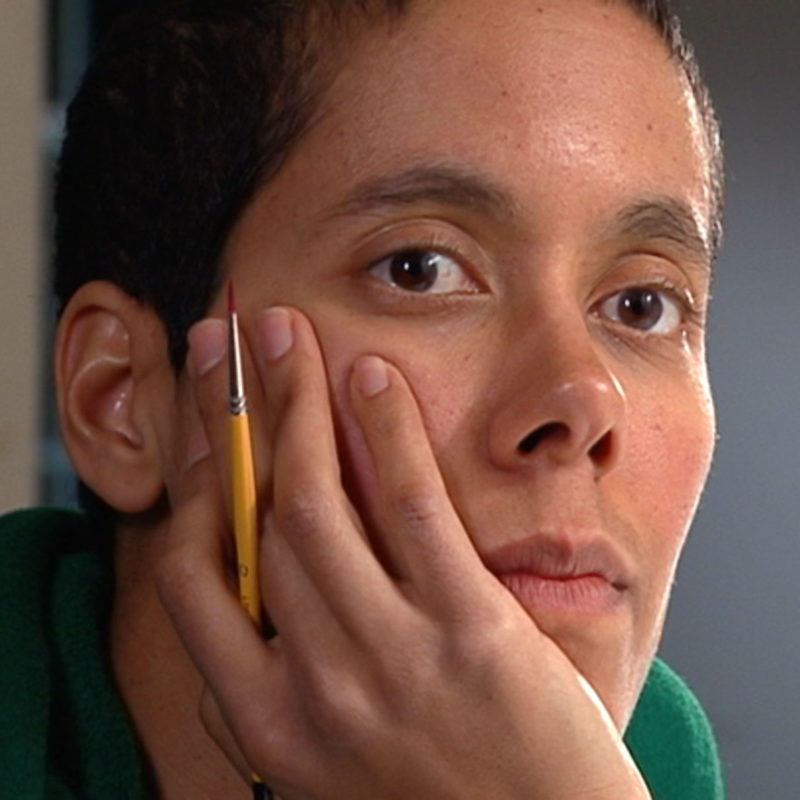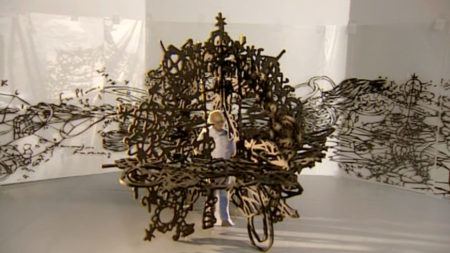Continue playing
(Time remaining: )
Play from beginning
Continue playing "{{ controller.videos[controller.getVideo(controller.currentVideo)].segmentParentTitle}}"
{{controller.videos[controller.getVideo(controller.currentVideo)].title}} has ended.
Power
The artists in Power challenge authority, oppression, and control. Each artist humanizes difficult issues by acting as a witness to violence, working to heal communities, or achieving a balance between constructive and destructive energies. Introduced by actor and comedian, David Alan Grier, Power is shot on location in New York, New York; Washington, D.C.; São Paolo, Brazil; North Adams, Massachusetts; Williamstown, Massachusetts; Cambridge, Massachusetts; Boston, Massachusetts; Hiroshima, Japan; Tijuana, Mexico; and Austin, Texas.
More information and creditsCredits
Created by: Susan Sollins & Susan Dowling. Executive Producer & Curator: Susan Sollins. Series Producer: Eve-Laure Moros Ortega. Associate Producer: Migs Wright. Assistant Curator: Wesley Miller. Production Manager: Alice Bertoni. Production Coordinator: Kelly Shindler. Producer: Catherine Tatge. Editor: Steven Wechsler. Host: David Alan Grier. Director of Photography: Takahisa Araki, Richard Chisolm, Mark Falstad, Gary Henoch, Samuel Henriques, Mead Hunt, Tom Hurwitz, Joel Shapiro, David Smith, Ken Willinger, & Sérgio Zeigler. Sound: Tom Bergin, Steve Bores, Dwayne Dell, Bob Freeman, Roger Phenix, Merce Williams, & Sérgio Zeigler. Assistant Camera: Chris DeGuy, Craig Feldman, Brian Hwang, Steve Nealey, & Matt Thurber. Production Assistant: Matt Cavanaugh & Justin Leitstein. Assistant Avid Editor: Robert Achs, Jamie Courville, Sean Frechette, Mike Heffron, David Kreger, Cara Leroy O’Connell, Joaquin Perez, Aaron Sheddrick, & Lynn True. Voice-Over Artist (Cai Guo-Qiang segment): Clem Cheung. Translator (Cai Guo-Qiang segment): Ai Guo, Louisa Lam, & Mingxia Li. Still Photography: Alice Bertoni.
Creative Consultant: Ed Sherin. Art Design & Animation: Open, New York. On-Line Editor: Don Wyllie & Frame:Runner NYC. Composer: Peter Foley. Voice-Over Artist: Jace Alexander. Sound Editing: Margaret Crimmins, Greg Smith, & Dog Bark Sound. Sound Mix: Tony Volante & Sound Lounge. Animation Stand: Frank Ferrigno & Frame:Runner NYC. Introductory Host Segments Created by: INTERspectacular. Commissioned Video Art by: Teresa Hubbard / Alexander Birchler.
Artworks Courtesy of: Laylah Ali; Ida Applebroog; Cai Guo-Qiang; Krzysztof Wodiczko; 303 Gallery, New York; Galerie Lelong, New York; Miller Block Gallery, Boston; & Ronald Feldman Fine Arts, New York. Archival Footage Courtesy of; Artist Network Pictures/Takahisa Araki; Zlatko Cosic/EYE PRODUCTION; Fox News/KTVI; & Ufer! Art Documentary.
Special Thanks: Mariana Valdrighi Amaral; Katie Block; The Art21 Board of Trustees; Center for Advanced Visual Studies, MIT; Curious Pictures; Simon Greenberg; Fireworks by Grucci; Andrea Hall; Hirshhorn Museum and Sculpture Garden; Stephanie Joson; Tomoko Kimata; The Kitchen; Jennifer Wen Ma; Rita MacDonald; The Maritime Hotel; MASS MoCA; Dean Moss; Nicole Parente; Sarah Paulson; Soundtrack F/T; Mari Spirito; The Arthur M. Sackler and Freer Gallery of Art; Amm Talluto; Charwei Tsai; & Adam Whiton.
Director of Education & Outreach: Jessica Hamlin. Director of Development: Kathi Pavlick. Development Associate: Sara Simonson.
Interns: Susan Agliata, Nathan Townes-Anderson, Hannah Blumenthal, Agnes Bolt, Lisa Charde, Mary Chou, Kate Crawford, Amanda Donnan, Sophie Dunoyer de Segonzac, Suzy Foster, Jules Gaffney, Katie Hen, Heather Hughes, Adam Krakowski, Georgia Kung, David Mark Kupperberg, Maiko Kyogoku, Phil Logan, Lisa Margulies, Michelle Maydanchik, Carla Meyers, Christine Miller, Geoffrey Pan, Sujay Pandit, Jihan Robinson, Jennifer Sarkilahti, Megan Scally, Karen Seapker, Greg Shilling, Sarah Sliwa, Jennifer Smith, & Elizabeth Swift.
Public Relations: Kelly & Salerno Communications. Station Relations: De Shields Associates, Inc. Legal Counsel: Albert Gottesman. Bookkeeper: Marea Alverio-Chaveco & William Handy.
Major underwriting for Season 3 of Art in the Twenty-First Century is provided by National Endowment for the Arts, PBS, Agnes Gund and Daniel Shapiro, Nathan Cummings Foundation, Corporation for Public Broadcasting, Jon and Mary Shirley Foundation, Bagley Wright Fund Bloomberg, The Horace W. Goldsmith Foundation, JPMorgan Chase, Melva Bucksbaum and Raymond Learsy, The Paul G. Allen Family Foundation, and The Andy Warhol Foundation for the Visual Arts.
Closed captionsAvailable in English, German, Romanian, Italian, Japanese, Korean, Chinese, Italian
Through the Art21 Translation Project, multilingual audiences from around the globe can contribute translations, making Art21 films more accessible worldwide.
Interested in showing this film in an exhibition or public screening? To license this video please visit Licensing & Reproduction.
Accomplished in a variety of media, Cai Guo-Qiang began using gunpowder in his work to foster spontaneity and confront the controlled artistic tradition and social climate in China. While living in Japan from 1986 to 1995, he explored the properties of gunpowder in his drawings, leading to the development of his signature explosion events. These projects, while poetic and ambitious at their core, aim to establish an exchange between viewers and the larger universe. For his work, Cai draws on a wide variety of materials, symbols, narratives, and traditions: elements of feng shui, Chinese medicine and philosophy, images of dragons and tigers, roller coasters, computers, vending machines, and gunpowder.
Teresa Hubbard and Alexander Birchler live and work in Austin, Texas, as life partners and artist-collaborators. Together they make short films and photographs about the construction of narrative time and space, without the context of a traditional story line; their open-ended, enigmatic narratives elicit multiple readings. They began their collaboration in the mid-1990s, making sculpture, installation, photography, and performance-based work. Their interest in the construction and negotiation of space, architecture, and the function of objects in three dimensions plays a primary role in their work. Their productions reveal a strong sense of carefully constructed mise-en-scène that owes as much to natural-history-museum dioramas as to cinematic directorial techniques.
Ida Applebroog has been making pointed social commentary in the form of beguiling comic-like images for nearly half a century. Anonymous “everyman” figures, anthropomorphized animals, and half-human/half-creature characters are featured players in the uncanny theater of her work. Applebroog propels her paintings and drawings into the realm of installation by arranging and stacking canvases in space, exploding the frame-by-frame logic of comic book and film narrative into three-dimensional environments. Strong themes in her work include gender and sexual identity, power struggles both political and personal, and the pernicious role of mass media in desensitizing the public to violence.
By appropriating public buildings and monuments as backdrops for projections, Krzysztof Wodiczko focuses attention on ways in which architecture and monuments reflect collective memory and history. Projecting images of community members’ hands, faces, or entire bodies onto architectural façades, and combining those images with voiced testimonies, Wodiczko disrupts our traditional understanding of the functions of public space and architecture. He challenges the silent, stark monumentality of buildings, activating them in an examination of notions of human rights, democracy, and truths about the violence, alienation, and inhumanity that underlie countless aspects of social interaction in present-day society.
Laylah Ali creates her small, figurative, gouache paintings on paper with such precision that it takes her many months to complete a single work. She meticulously plots out every aspect of her work in advance, from subject matter to choice of color and the brushes that she will use. Her paintings resemble comic-book serials, but they also contain stylistic references to hieroglyphics and American folk-art traditions. Ali often achieves a high level of emotional tension in her work as a result of juxtaposing brightly colored scenes with dark, often violent subject matter that speaks of political resistance, social relationships, and betrayal. Although Ali’s interest in representations of socio-political issues and current events drives her work, her finished paintings rarely reveal specific references.
“I think when people say violence, oftentimes, we think of the violent act. I’m more interested in what happens before and after.”
Laylah Ali
